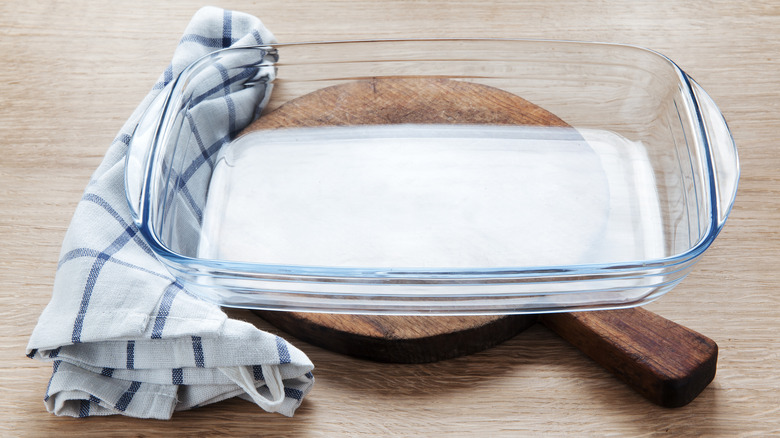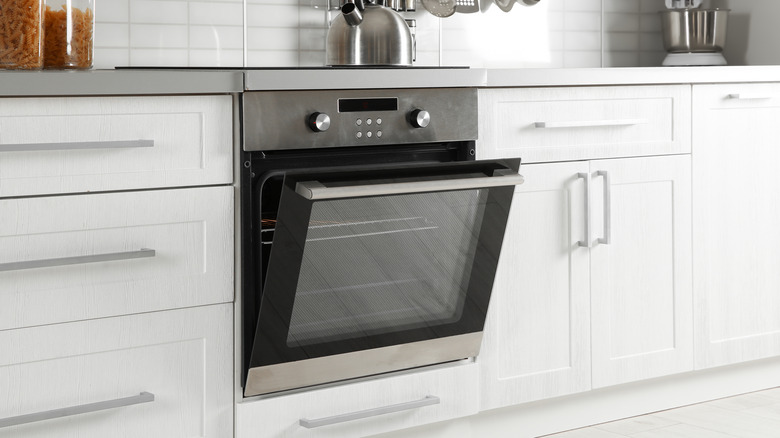This Is What May Happen When You Put Glassware In The Oven
While glass cookware is specially designed to withstand high temperatures, it can sometimes become damaged in the oven. Even though your casserole dishes can take extreme heat, keep in mind that there is an inherent risk of danger while baking. The reason why has to do with the kind of material the glassware is made from.
While it might seem like glass bakeware should be indestructible under intense heat, you have to keep in mind that the quality of modern glassware is not the same as it used to be decades ago, and the differences between American and European glassware plays a part. In 2010, Consumer Reports revealed there were conflicting reports as to whether a new type of glassware material, more commonly found in America, was stronger and more resistant to a specific danger than the old type, which is more commonly used in Europe. Still, it's important err on the side of caution by following the instructions about putting glassware in the oven — for this one reason.
Below, find out just what could happen when you put glassware in the oven — and which types are more likely to cause a scary commotion.
Casserole dishes could be dangerous
When glass is subject to high temperature changes, it increases its risk to break, according to Pyrex. This means that while bakeware is not necessarily guaranteed to break, it does have an increased chance, per The New York Times. It's important to note that when your glassware meals bake, you are opening yourself up to the possibility of opening the oven door and being met with a cracked casserole dish.
There are three different types of glassware: soda-lime, tempered, and borosilicate. According to the Times, easy-to-break drinking glasses are made from soda-lime, while thicker, temperature-resistant cookware is made from tempered and borosilicate glass. But even the thicker glass can break, which will leave you cleaning up broken glass from a now-dirty oven.
When glass cookware breaks in the oven, it is often because of thermal shock, which is what happens when there is an extreme shift in temperature. "If one part is expanding or contracting more or less than the other, [then] the region in between [is] where the stress happens," Jane Cook, Corning Museum of Glass's former chief scientist, told The New York Times. "It's literally ripping itself apart." In order to avoid this stress, make sure you choose the right glassware material — and follow Pyrex's instructions, like making sure the oven is pre-heated before inserting the glass, and "not add[ing] liquid to hot glassware."

